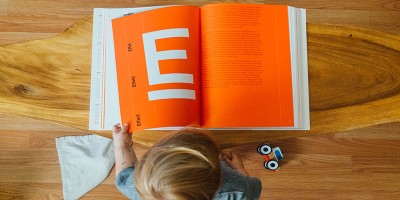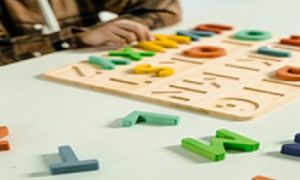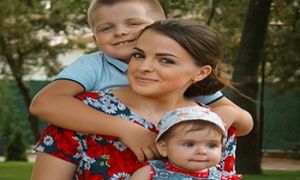The EYLF explains literacy as the children’s “capacity, confidence and disposition to use language in all its forms”. Thus literary includes not only talking, listening, viewing, reading and writing but a range of modes of communication including music, movement, dance, storytelling, visual arts, media and drama. The following provides information on the Literacy Rich Environment, Characteristics Of A Literacy-rich Environment, Components Of A Literacy-rich Environment, Strategies and more!
What Is A Literacy-rich Environment?
In the early childhood education and care context, a literacy-rich environment is one that allows children manifold opportunities for engaging in emergent literacy behaviours in a meaningful and authentic way. The chief benefits of designing such an environment include:
- Motivating children to engage children with books, print and different types of texts, thereby practising foundational literacy skills.
- allowing children agency to choose their own literacy-oriented activities and experiences rather than being directed by educators.
- allowing educators to facilitate the development of key oral language and emergent literacy skills.
- Demonstrating the use of literacy in everyday life, thereby consolidating children’s understanding of the functionality of literacy, rather than as something needed to ‘learn’ for school readiness or to get validation from adults.
Characteristics Of A Literacy-rich Environment
-
It is functional – as mentioned above, a literacy-rich environment should represent the use of literacy in the child’s regular surroundings and daily activities – like from being able to read labels on cereal boxes and restaurant menus to writing out home addresses to a friend or a card for granny’s birthday.
-
It is authentic – a literacy-rich environment should use visual, verbal and print texts which are embedded in the child’s real-life and surroundings rather than adopting formal, bookish words and phrases, whether to view, read or write.
-
It is diverse – this means that a literacy-rich environment includes texts in different languages, allows opportunities for children to speak their home language and depicts environmental print in a variety of relevant community languages. Also in keeping with the broader understanding of literacy, such an environment incorporates texts other than written ones, like music, dance, visual arts and drama.
Components Of A Literacy-rich Environment
When setting up a literacy-rich environment, educators can include the following:
- Reading area – this can be anything from a cosy reading nook in the garden equipped with usual children’s favourites to a regular library indoors where brightly illustrated books are displayed on low shelves. No matter what the scale, ensure that books are frequently rotated and always available to the children. Do up the space with soft furnishings so that children curl up on a rug or settle down against a few comfy cushions. If space and resources allow, set up a Listening Centre too where children can listen to CDs of stories on headsets while following the pictures in their books.
- Furniture – apart from solitary reading, children should also be allowed to have one-on-one reading time with the teacher besides joining larger or smaller groups for a story-telling time. For this to happen, place furniture in a way that facilitates small group experiences, allowing children to converse and collaborate.
- Writing area - A small desk or table may also be planned for children to practice drawing and writing their names, letters, numbers, shapes and so on. See that such an area is well equipped with a variety of papers, envelopes, stamps, rulers, tape, glue, stencils, and many different types of writing instruments like crayons, pencils, markers and sand-writing trays.
- Dramatic play area - This is where children role-play situations and characters from real-life or fantasy scenarios. Sometimes this area might be a kitchen or a home corner while at other times it might be a fire station, restaurant, doctor’s chamber, or ship on the high seas. As far as possible set up role-play scenarios with real items like cooking tools, small appliances that no longer work, old clothes and other objects from children's houses and yards. By reflecting on the lived experiences of children, and their cultural contexts and allowing them to imitate significant adults, such items encourage children to engage in sustained conversations thereby building their verbal and communication skills. Also, encourage them to imagine, create, sing and dance by equipping the space with dress-up clothes and props like feathers, old handbags, cardboard boxes or treasure chests containing loose materials like scarves, capes and stoles. These activities will motivate children to make meaning with not just words but other media like images, gestures, music and dance.
- Environmental print - Environmental print includes signs, labels and letters found in the daily surroundings of learners. Some examples are street signs, labels on milk cartons and even the K in Kmart. When children are just learning to read, environmental print helps relate classroom lessons to the real world. Get hold of attractive objects like a candy wrapper or a favourite cereal box to practice some literacy recognition activities. Ask children if they can find the first letter of their name somewhere on the box; then extend it by having them look for other letters from their names. Again, the next time you take the class around the neighbourhood or go on a bus trip, take photos of different street signs like STOP, EXIT and those which indicate crossings and speed limit; once your learners return to class, take print-outs of the photos and have them paste these in scrapbooks or floor books as a form of visual storytelling.
- Functional print – this refers to texts and images that signify meaningful contexts, objects and behaviours negotiated by learners on a daily basis. One of the easiest ways to introduce children to functional print is to work together and label all the significant areas in the room, from the music corner and play areas to shoe racks and cubbies. Help children which labels can stand on their own like the one for the library and which can be accompanied by illustrations, like the ones for objects such as clocks and desks. Look for ways you can engage children in reading such prints and labels on a daily basis so that they can start making the connection between print and meaning
Scaffolding Literacy
However, it is not enough just to create a literacy-rich environment and leave children to find their way through it. In order to mine the full potential of such an environment, educators must model literacy behaviours like reading, taking notes and using print as well as interact with children to scaffold and extend literacy concepts. This can be achieved by:
drawing children’s attention to the functionality of print. For example, when children are looking for items or putting them away, draw their attention to signs and labels that tell where things are. Also encourage children to interact with texts and environmental print, like by supporting them to add to the daily calendar or select a book for the educator to read to the group.
Integrating books in other areas – a literary-rich environment does not restrict books to the reading area but integrates them in other spaces as well. So for example, you can keep colourful picture books on animals and galaxies in the Science and Discovery area of the room; another idea is to place books on different types of structures and buildings near the construction table. The presence of books as reference material in other areas will underline the functionality of literacy.
Using non-literary experiences as literacy opportunities. For example, play with edible finger paint can be used with toddlers to develop vocabulary related to sensory experience and art. So as children are busy dabbing paint, the educator can draw their attention to the materials they are using, the texture of the paint and the movements of their fingers. Use these opportunities to model language, describing textures and movements. For example:
- the paint is slimy, does it feel slippery?”
- “The colours are mixing together.
- “you are making lines and swirls in the paint.”
For older children, a visit to the worm farm can be a fun way to practice literacy. As children observe the worms and their home, as well as take turns feeding them food scraps, they can be encouraged to ask questions, discuss, and share insights - all of which involve using language. The educator can guide their discussion using a poster displaying images and print as ways of building visual, reading and perhaps writing skills too.
In all these ways, a literacy-rich environment can be created to provide children with opportunities to use diverse texts and literacy elements in authentic and functional ways
References:
- Literacy Rich Environment, Department Of Education Victoria
- Belonging, Being and Becoming, ACECQA
- Create The Perfect Play Space, ACECQA
- Environmental Print, Reading Rockets







 As an Educator in Australia, your pay rate falls under the Children’s Services Award 2010. This award states the minimum amount that an employer can
As an Educator in Australia, your pay rate falls under the Children’s Services Award 2010. This award states the minimum amount that an employer can When working as a qualified Early Childhood Teacher (with a university degree) within a service, your rate of pay will come from the Educational Services
When working as a qualified Early Childhood Teacher (with a university degree) within a service, your rate of pay will come from the Educational Services When working as a Diploma Qualified Educator your pay rate is from the Children's Services Award 2010. This Award states your minimum rate of pay
When working as a Diploma Qualified Educator your pay rate is from the Children's Services Award 2010. This Award states your minimum rate of pay When working as a Cert 3 Qualified Educator, your pay rate is from the Children's Services Award 2010. This Award states your minimum rate of
When working as a Cert 3 Qualified Educator, your pay rate is from the Children's Services Award 2010. This Award states your minimum rate of Educational Leaders play a crucial role in their early childhood service by ensuring that the educational program aligns with best practices and supports the holistic
Educational Leaders play a crucial role in their early childhood service by ensuring that the educational program aligns with best practices and supports the holistic In early childhood education and care, ratios are more than a technicality—they are a frontline safeguard. Every child deserves responsive supervision, emotional connection, and developmental
In early childhood education and care, ratios are more than a technicality—they are a frontline safeguard. Every child deserves responsive supervision, emotional connection, and developmental Here’s a comprehensive Mobile Phone and Smart Watch Policy tailored for early childhood education and care (ECEC) services in Australia, aligned with the latest 2025
Here’s a comprehensive Mobile Phone and Smart Watch Policy tailored for early childhood education and care (ECEC) services in Australia, aligned with the latest 2025 With the new national child safety reforms kicking in on 1 September 2025, early childhood services like yours have a real opportunity to lead the
With the new national child safety reforms kicking in on 1 September 2025, early childhood services like yours have a real opportunity to lead the The Sea of Fish Challenge is a national initiative that invites children, educators, families, and communities to create and display fish artworks as a symbol
The Sea of Fish Challenge is a national initiative that invites children, educators, families, and communities to create and display fish artworks as a symbol Across the early childhood education and care sector, educators are sounding the alarm: current staffing ratios are insufficient to deliver safe, meaningful, and developmentally appropriate
Across the early childhood education and care sector, educators are sounding the alarm: current staffing ratios are insufficient to deliver safe, meaningful, and developmentally appropriate


